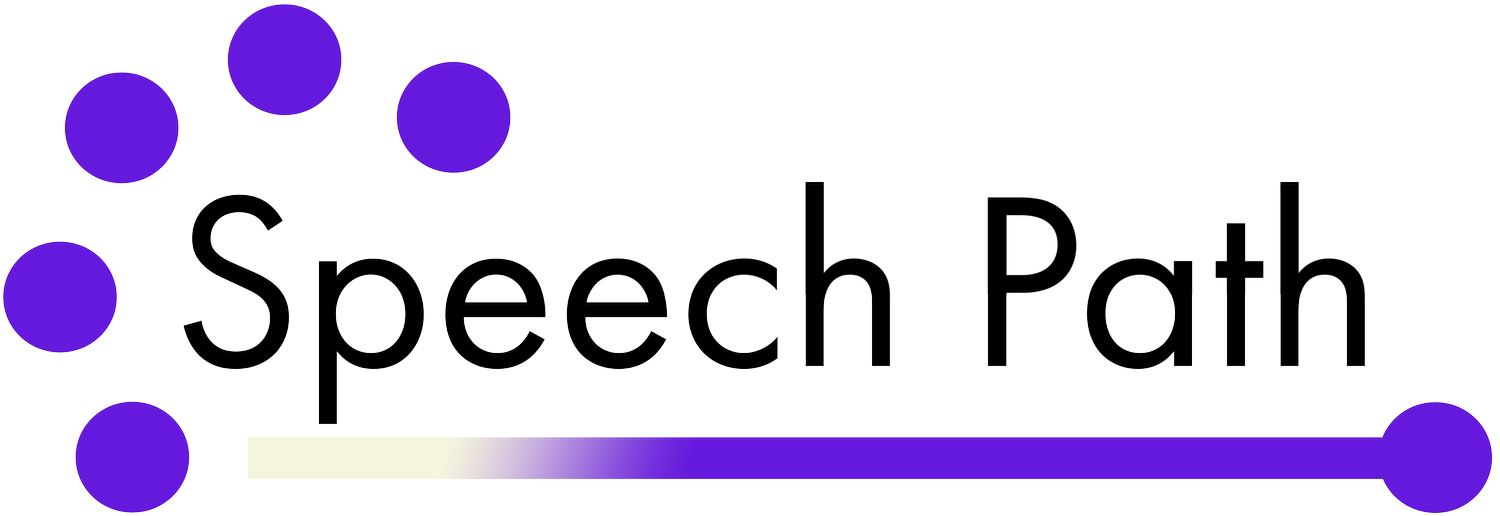The Role of Play in Language Development: It's More Than Just Fun and Games!
Play is an inherent part of childhood. It's how children explore the world, make sense of their experiences, and most importantly, it's how they learn. For children, play is their "work." In fact, play is an essential tool in fostering language development and communication skills in children. Play allows children to experiment with language through activities like storytelling, pretend play, and interactive games. They learn how to express their ideas, describe their actions, and engage with others. This fun and low-pressure context provides an excellent platform for language to flourish.
What Does Play-Based Therapy Look Like?
A skilled speech-language pathologist (SLP) can make speech/language therapy look just like play! Often, the child is having so much fun, they don't even realize they're learning and practicing vital skills. During therapy sessions, the clinician may use toys, games, and activities that interest your child to keep them engaged. SLPs integrate evidence-based language stimulation strategies into play and set goals that are achievable within the play context. For instance, your child’s SLP might set up a pretend supermarket, providing opportunities for your child to use language for various purposes like requesting ("Can I have the apple?"), commenting ("The banana is yummy"), and negotiating ("It’s my turn next”). The SLP may also model and use language that's just slightly above your child's current level, so they're always learning and growing. For example, if your child primarily uses 2-word phrases, the SLP might add 1-2 words to what your child says to show them how they can expand their phrases into longer sentences.
Your Role in Play-Based Language Therapy
As a parent or caregiver, you can have a significant positive impact on a child's language development by becoming their play partner. Your child’s SLP should work closely with you to share strategies and ideas for playing effectively to encourage language development, ensuring you're well equipped to continue the valuable work of playing outside of therapy sessions.
Ideas for Using Toys to Boost Language Skills
Toys can be used in many different ways to target various language skills. We encourage you to think about different ways to use your child’s favorite play items. Here are a few ideas to get you started!
1. Teddy Bears/Dolls/Action Figures: Engaging with teddies, dolls, and action figures can be an excellent way to foster pretend play, which boosts vocabulary, sentence structure, and conversational skills. Your child might make the teddy eat, sleep, or play, leading to discussions and language use about daily routines and activities. Try acting out some of the activities your child completed that day (e.g., a visit to the zoo, playing at the park, going to the doctor) with their teddy, doll, or action figures to help get things started.
2. Toy Cars/Trains: These can be used to teach various concepts, such as speed (e.g., fast, slow), actions (e.g., stop, go, turn), positions (e.g., in, out, on top), and colors (e.g., red, yellow, green). For example, the car might need to "stop" at a "red light" or "go slowly" when the light is "yellow." To help your child build longer and more complex sentences, they need a diverse vocabulary. Model different types of words within play to help grow their vocabulary beyond basic colors, letters, and numbers.
3. Blocks/Magnetic Tiles: Building blocks and magnetic tiles can be used in countless creative ways in play, limited only by the bounds of your imagination. These versatile tools can be adapted based on the unique needs and interests of each child. You can build structures (e.g., tower, home, school, pool), animate the blocks/tiles by adding stickers or drawing on them, or add in other toys to tell a story in the context of the structure you built. Talk about what your child is doing, thinking, or feeling while playing.
4. Dress-Up Clothes: By stepping into different roles and characters, children have the opportunity to engage in imaginative storytelling and verbal expression. With your help, they can describe their costumes, tell and act out scenarios, and explore different perspectives. Join in the play to provide a rich and dynamic context for language learning.
Remember, you can play with almost anything in many different ways to encourage language development, so let your imagination and your child's interests guide you! By embracing and engaging in play, we can create a rich, interactive, and effective learning environment that allows your child's communication skills to thrive. Let's make learning fun and keep playing!
